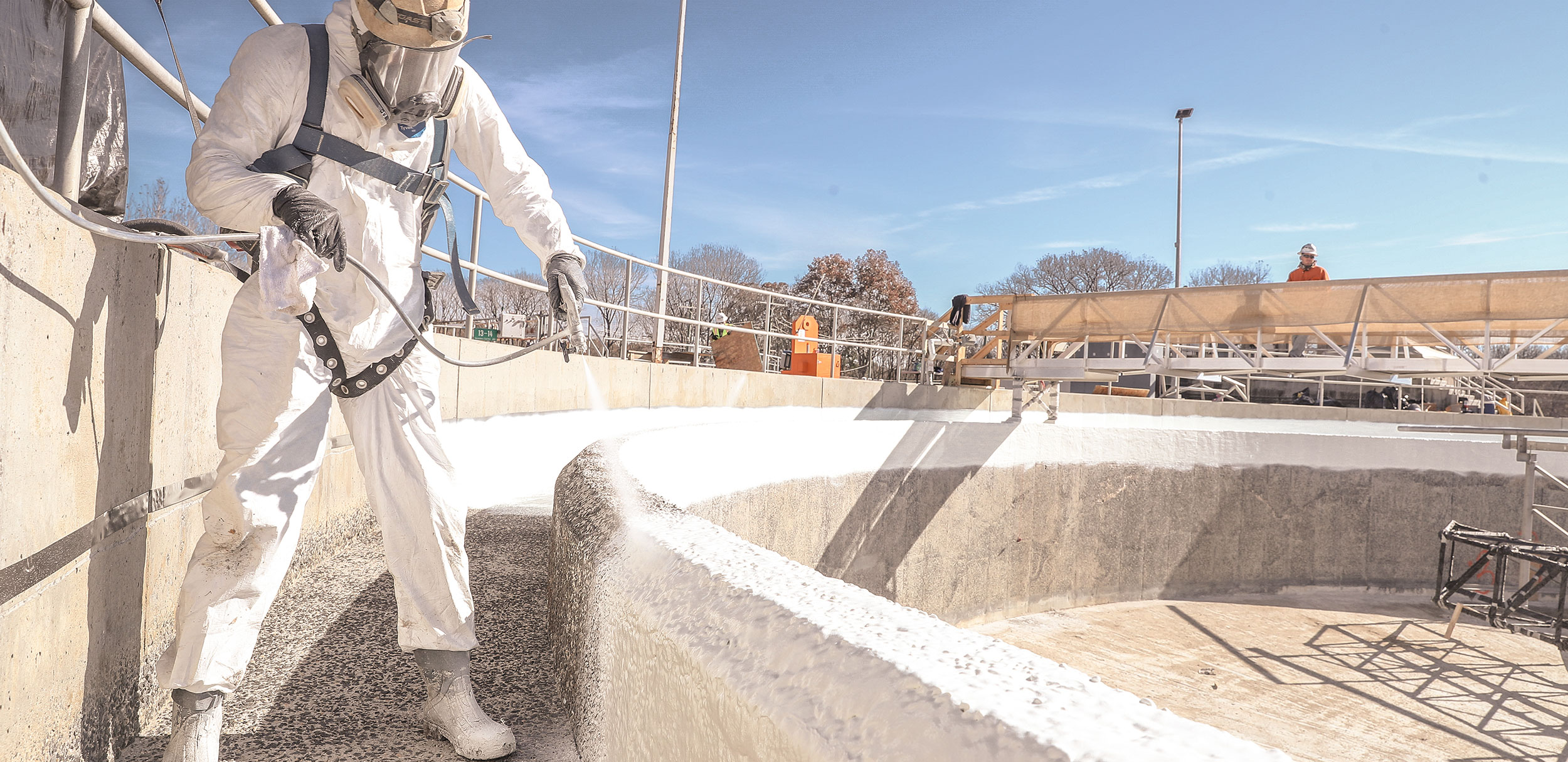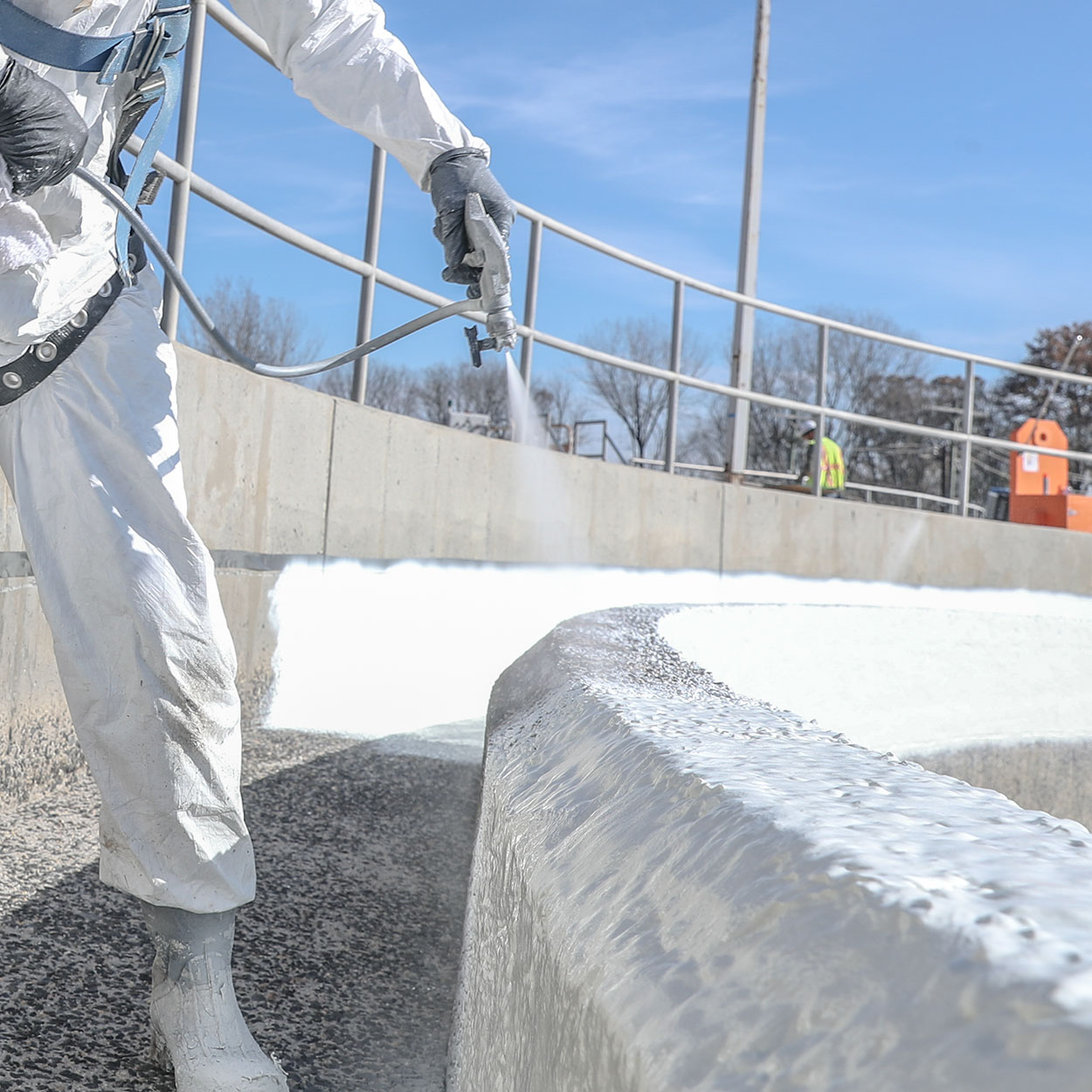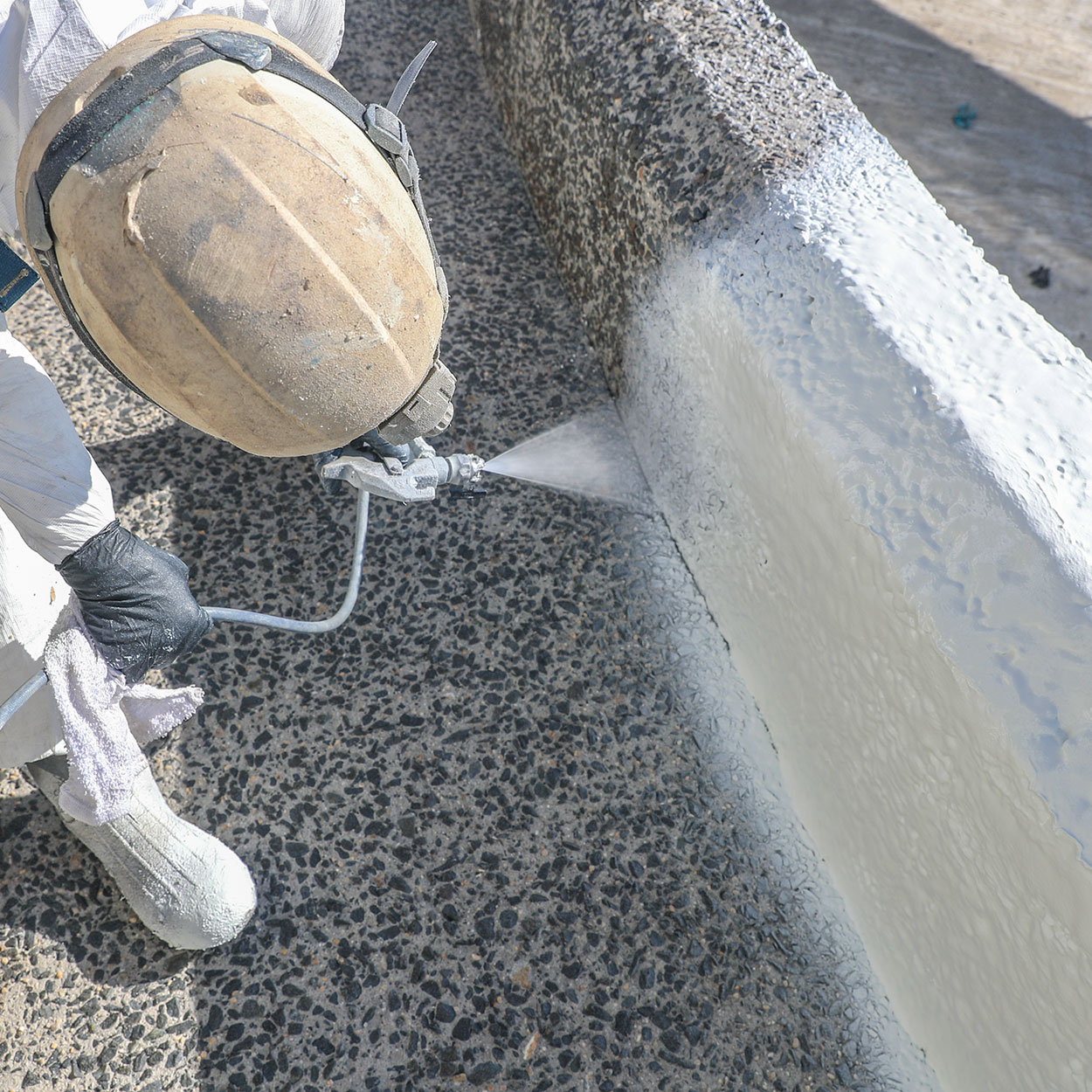McAlpine Creek Wastewater Management Facility Clarifier Trough Rehabilitation
Warren’s single-coat epoxy system saves seven months of time
The McAlpine Creek Wastewater Management Facility (MCWWMF) is the largest wastewater treatment facility operated by Charlotte Water (CLTWater). In 2018, CLTWater began a Reliability and Process Improvements project. The project involved 16 secondary clarifiers ranging from 95 to 150 feet in diameter, with the oldest being nearly 60 years old.
CLTWater considered an epoxy coating. They had experience with epoxy coatings but historically ran into issues with failures and delaminations. CLTWater opted to move forward with a pilot study with four different epoxy manufacturers. Three manufacturers applied a test patch of their epoxy within the clarifier launder troughs. The team performed adhesion testing and analyzed the following variables: cost, schedule, performance, quality, service life, and safety. They determined Warren Environmental’s 301-14 epoxy system was the best value for their project.
Warren Environmental’s epoxy was not the lowest-cost option. Yet, based on the seven-month time savings, our single-coat epoxy application provided the most cost savings. If CLTWater decided to use an alternative product, then the project may have incurred a delay due to the minimum cure time required for the product’s mortar underlayment. This delay would have resulted in additional overhead costs to CLTWater.
Another key benefit of the Warren epoxy coating is its safety. Our epoxies are free of volatile organic compounds (VOCs), solvents, styrene, and isocyanates making the product safe for applicators, workers, and the surrounding work site. This was a tremendous benefit as other scopes of work could occur while the epoxy coating was applied. The coating could be removed as a critical path activity and made concurrent with the rest of the project. This provided CLTWater with schedule reassurance and efficiency.
Rehabilitating the 60-year-old concrete involved prepping and cleaning the substrate’s surface of all debris. The surface showed depths of up to ½-inch of exposed aggregate. Afterward, the team applied a single coat of approximately 125 mils of Warren’s 301-14 epoxy at a rate of five shifts per clarifier.
Photos



